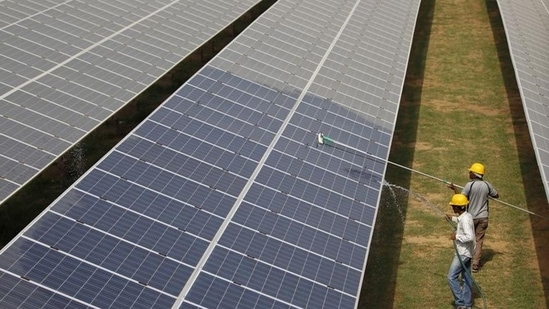Adequate, affordable finance remains constraint in India's climate actions, says chief economic adviser
India’s installed power generation capacity by 2029-30 is expected to be more than 800 GW, of which 500 GW will be based on sources other than fossil fuels, the survey pointed out, citing projections of the Central Electricity Authority.
India will stick to its global commitments on containing the climate crisis, seen most notably in its ambitious targets on clean energy transition to reduce its dependence on burning fossil fuels, according to Economic Survey 2022-23 tabled in Parliament on Tuesday.

“Climate change and the environment are not only hot-button issues globally but are critical to India realising its aspirations,” chief economic adviser V Anantha Nageswaran said in the preface to the economic report card of the government. “Hence, India currently spearheads one of the most robust climate actions through its Nationally Determined Contributions (NDC), which includes an ambitious programme for transitions to clean energy in the world.”
Also Read | IFSC a path-breaking financial reform: Economic Survey
The transition, however, depends on adequate availability of climate finance, the survey said. “Obligations on climate should be matched with the on-time availability of climate finance, technology, and inputs like critical minerals, while not jeopardising the socio-economic development objectives and aspirations.”
India’s installed power generation capacity by 2029-30 is expected to be more than 800 GW, of which 500 GW will be based on sources other than fossil fuels, the survey pointed out, citing projections of the Central Electricity Authority. The country’s average carbon dioxide emission rate is expected to decline by around 29% by 2029-30 compared to 2014-15, owing to clean energy transition, it said.
“India is spearheading one of the world’s most ambitious clean energy transitions and remains steadfast in its commitment to combating climate change,” the survey said. “Despite the adverse impacts of Covid-19 on the economy, India has enhanced its climate ambition manifold.”
As much as 50% of its installed capacity to produce electricity will come from cleaner sources by 2030, India said in its updated NDC, or voluntary commitment to reduce carbon emissions, to the United Nations Framework Convention on Climate Change in August last year.
The clean energy transition will see huge demand for critical minerals such as cobalt, copper, lithium, nickel and rare earth elements that are required to produce electric vehicles and batteries, and harness solar and wind energy, the survey pointed out. It has pitched for a multidimensional mineral policy, which would reduce import dependence.
The survey also said use of green hydrogen will be an important aspect of its energy transition. The Centre approved the National Green Hydrogen Mission on January 4 with an initial outlay of ₹19,744 crore. NITI Ayog, the government’s think tank, has estimated the cumulative value of the green hydrogen market to be $8 billion by 2030 and $ 340 billion by 2050.
Wealthy nations also must do their bit if the world is to succeed in containing the climate emergency by setting examples of policy and behavioural changes that work in their backyard and whose trade-offs are well recognised and accepted by their people, the survey said. It is not irresponsible that developing countries put their own growth and development aspirations ahead of their global climate obligations, the survey added.
“Our modelling assessment shows that India’s 500 GW renewable energy capacity target is more than what the economy would achieve just on the basis of market trends. In other words, the target would be realised only on the back of additional policy push,” said Vaibhav Chaturvedi, fellow at the Council on Energy, Environment and Water, a think tank. “This push is already evident in the revised renewable energy purchase obligation trajectory that the government has mandated for states.”
“The Economic Survey rightly links the issue of transition cost to that of availability of on-time and adequate finance,” Chaturvedi added. “This explicit recognition that climate mitigation and adaptation require finance that is additional to that needed for meeting India’s development goals is in line with the recent statement by India’s G20 Sherpa that the developed world hasn’t even met its annual commitment of $100 billion yet. Clearly, climate finance is going to be a big agenda for India in its G20 presidency.”
Stay informed on Business News, TCS Q4 Results Live along with Gold Rates Today, India News and other related updates on Hindustan Times Website and APPs



